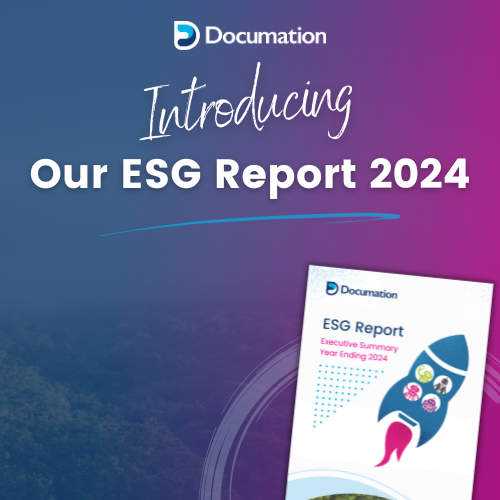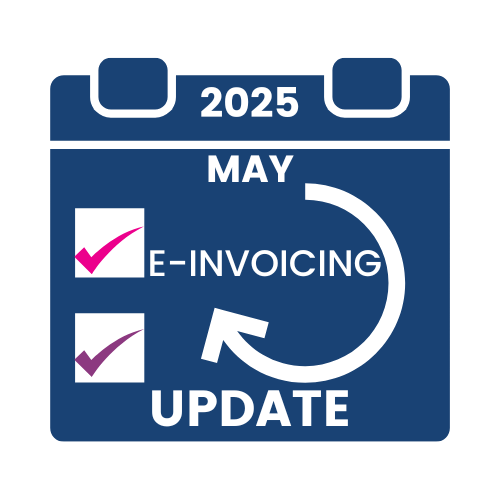Why it isn’t a simple matter of ROI when considering a finance process automation
When presenting an automation project to stakeholders one of the blockers can be budget restrictions and the justification is the ROI. But is it that simple?
Calculating the return on investment (ROI) for finance process automation isn’t always straightforward, here are some reasons why;
Complexity of Processes: Finance processes vary in complexity across different organisations and industries. Calculating ROI requires a detailed understanding of existing processes, their inefficiencies, and the potential improvements achievable through automation. Factors such as transaction volume, process variability, and regulatory requirements can further complicate ROI analysis.
Implementation Costs: Implementing finance process automation involves upfront costs, including software licensing fees, hardware infrastructure, implementation services, and training expenses. Calculating ROI requires accurately estimating these costs and comparing them against the expected benefits over time.
Time to Realise Benefits: The benefits of finance process automation may not be immediately realised upon implementation. It often takes time for organisations to fully transition to automated processes, train employees, and realise efficiency gains. Calculating ROI requires considering the time lag between implementation and the attainment of full benefits.
Integration Challenges: Integrating finance automation solutions with existing systems and workflows can pose challenges, such as data migration, compatibility issues, and process redesign. Addressing these integration challenges effectively is essential for realising the full potential of automation and achieving meaningful ROI.
Risk Factors: There are inherent risks associated with finance process automation, including technology risks, security vulnerabilities, and operational disruptions. Calculating ROI requires assessing these risks and incorporating risk mitigation measures into the analysis to ensure the projected benefits are realised.
Change Management: Successful implementation of finance process automation requires effective change management to overcome resistance, drive adoption, and ensure alignment with organisational goals. Calculating ROI requires factoring in the costs associated with change management activities and assessing their impact on the overall ROI
Measuring Intangible Benefits: In addition to tangible benefits such as cost savings and efficiency gains, finance process automation can yield intangible benefits such as improved decision-making, enhanced customer satisfaction, and competitive advantage. Quantifying these intangible benefits and incorporating them into ROI calculations can be challenging but essential for a comprehensive analysis.
Understanding ROI on an automation solution
According to Gartner, the average cost of manually processing a supplier invoice in the UK for an enterprise company can range from £4 to £30 per invoice. This cost can vary depending on factors such as the complexity of the invoice, the level of automation in the company’s processes, and other operational factors. How does automation save costs for this process?
Enhanced Efficiency:
Manual financial tasks, such as data entry, reconciliation, and invoice processing, are not only time-consuming but also prone to errors. Finance automation solutions, powered by advanced algorithms and machine learning, streamline these processes, significantly reducing the time and effort required. For instance, automated invoice processing can expedite payments, eliminate bottlenecks, and enhance cash flow management. By reallocating resources from mundane tasks to value-added activities, organisations can boost productivity and achieve greater operational efficiency.
Cost Savings:
Finance automation eliminates the need for manual intervention in routine financial processes. By reducing labour costs associated with manual data entry, processing, and reconciliation, companies can achieve significant operational efficiencies. Moreover, automation minimises the risk of errors and fraud, thereby avoiding potential financial losses and regulatory penalties. Additionally, streamlined processes enable organisations to negotiate better terms with suppliers, optimise procurement processes, and leverage early payment discounts, further driving cost savings.
Improved Accuracy and Compliance:
Manual financial processes are inherently prone to errors, resulting in inaccuracies, discrepancies, and compliance risks. Finance automation solutions, equipped with robust validation mechanisms and audit trails, ensure data accuracy and regulatory compliance. By automating reconciliation, reporting, and compliance tasks, organisations can mitigate the risk of errors, fraud, and non-compliance, safeguarding their financial integrity and reputation. Moreover, automation facilitates real-time monitoring and reporting, enabling proactive risk management and regulatory compliance.
Strategic Insights and Decision-Making:
Finance automation generates a wealth of data that can provide valuable insights into business performance, trends, and opportunities. By leveraging analytics and reporting capabilities, organisations can gain actionable insights into their financial health, operational efficiency, and market dynamics. These insights enable informed decision-making, strategic planning, and performance optimisation across the organisation.
Scalability and Agility: Scalability and agility are critical imperatives for business growth. Finance automation solutions are inherently scalable, capable of handling increasing volumes of transactions and complexities without significant manual intervention. Whether it’s expanding into new markets, launching new products, or adapting to regulatory changes, automation enables organisations to scale their finance operations seamlessly. Automation fosters agility by reducing the time-to-market for financial processes, with real time reporting. Because processes such as data capture can be performed within minutes rather than days, all the relevant information is available to monitor cashflow and enables a rapid response to market dynamics and competitive pressures
Establishing the return on investment (ROI) for finance process automation
This involves analysing various factors that contribute to the costs and benefits associated with implementing automation solutions:
Implementation Costs:
- Software Licensing Fees: Initial costs associated with acquiring finance automation software licenses.
- Hardware Infrastructure: Costs related to purchasing or upgrading hardware necessary for implementing automation solutions.
- Implementation Services: Expenses for professional services, consultancy, and customisation required for implementing and integrating automation solutions.
- Training: Costs associated with training employees on using the automation software and adapting to new processes.
Operational Costs:
- Labour Costs: Costs associated with manual labour required for performing finance processes before automation.
- Error Correction: Expenses related to identifying and rectifying errors or discrepancies in financial data.
- Paper and Printing: Costs associated with paper-based documentation, printing, postage, and storage.
- Late Payment Penalties: Financial penalties incurred due to delayed invoice processing or payment.
Savings and Efficiency Gains:
- Labour Savings: Reduction in labour costs resulting from automation of manual tasks such as data entry, processing, and reconciliation.
- Error Reduction: Savings achieved by minimising errors and discrepancies through automation, thereby reducing the need for error correction and rework.
- Processing Time: Reduction in processing time for financial tasks, leading to increased efficiency and productivity.
- Early Payment Discounts: Savings generated by leveraging discounts offered by suppliers for early invoice payment.
Revenue Enhancement:
- Improved Cash Flow: Increase in cash flow resulting from faster invoice processing and payment cycles enabled by automation.
- Revenue Growth: Potential for revenue growth through enhanced customer satisfaction, improved decision-making, and strategic insights derived from automation-driven analytics.
Risk Mitigation:
- Fraud Prevention: Reduction in the risk of fraud and financial losses through automation-driven security measures and controls.
- Compliance Management: Savings achieved by ensuring compliance with regulatory requirements and avoiding penalties associated with non-compliance.
Intangible Benefits:
- Enhanced Decision-Making: Value derived from improved access to real-time financial data and analytics for informed decision-making.
- Customer Satisfaction: Benefits resulting from improved accuracy, timeliness, and transparency of financial processes, leading to enhanced customer satisfaction and loyalty.
- Competitive Advantage: Strategic advantages gained through faster response times, agility, and innovation enabled by finance process automation.
Timeframe for ROI:
- Short-Term vs. Long-Term: Consideration of the time it takes to realise the full benefits of finance process automation and the timeframe for achieving a positive ROI.
Scalability and Flexibility:
- Scalability: Evaluation of the scalability of automation solutions to accommodate future growth and changes in transaction volumes or business requirements.
- Flexibility: Assessment of the flexibility of automation solutions to adapt to evolving regulatory requirements, technological advancements, and organisational needs.
By carefully analysing these variables and conducting a comprehensive ROI analysis, organisations can make informed decisions regarding finance process automation initiatives and maximize the value derived from their investments.
Cost reduction Versus saving money
Cost reduction and saving money through implementing a finance process automation solution may seem synonymous, but they encompass slightly different perspectives and outcomes:
Cost Reduction:
Cost reduction focuses on minimising expenses associated with specific financial processes or operations within an organisation. When implementing finance process automation, cost reduction strategies typically target:
Labour Costs: Automation eliminates the need for manual intervention in routine financial tasks, reducing the labour hours required for data entry, processing, and reconciliation.
Error Correction and Rework: Manual financial processes are prone to errors, leading to additional costs associated with error detection, correction, and rework. Finance automation solutions reduce the risk of errors and discrepancies, minimising the need for costly remediation efforts.
Paper and Printing Expenses: Traditional paper-based financial processes incur expenses related to paper, printing, postage, and storage. Automation replaces paper-based workflows with digital processes, eliminating these expenses and promoting environmental sustainability.Late Payment Penalties and Interest Charges: Manual invoice processing and payment delays can result in late payment penalties, interest charges, and strained supplier relationships. Finance automation expedites invoice processing and payment cycles, reducing the likelihood of late payments and associated costs
Saving Money:
Saving money through finance process automation involves optimising financial operations to generate tangible monetary benefits and returns on investment (ROI).
Improved Cash Flow Management: Automation accelerates invoice processing and payment cycles, enabling organisations to optimise cash flow and leverage early payment discounts. By enhancing liquidity and reducing financing costs, businesses can save money and improve financial performance.
Reduced Fraud and Compliance Risks: Manual financial processes are susceptible to fraud, errors, and compliance breaches, resulting in financial losses, regulatory penalties, and reputational damage. Finance automation solutions enhance security, control, and compliance, mitigating the risk of fraud and regulatory non-compliance.
Optimised Resource Utilisation: Automation streamlines financial workflows, enabling organisations to optimise resource allocation and utilisation. By reducing manual effort and administrative overhead, businesses can achieve greater efficiency and productivity, saving money on operational expenses.
Negotiating Supplier Discounts: Automation enables organisations to negotiate favourable terms with suppliers, optimise procurement processes, and leverage early payment discounts. By improving supplier relationships and negotiating better pricing agreements, businesses can save money on procurement expenses and enhance profitability.
In summary, while cost reduction and saving money are closely related concepts, they encompass different aspects of financial management and operational efficiency. Cost reduction focuses on minimising expenses associated with specific financial processes, while saving money through automation involves optimising financial operations to generate tangible monetary benefits and ROI. By implementing finance process automation, organisations can achieve both cost reduction and savings, driving sustainable financial performance and competitive advantage.





